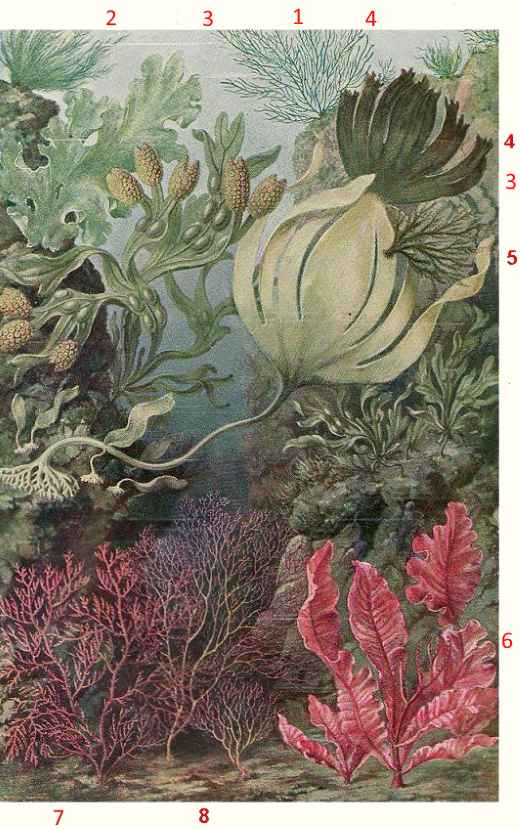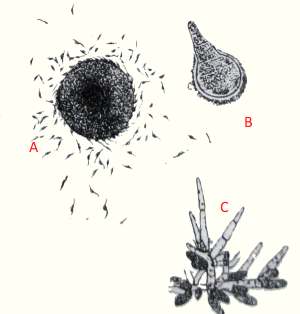Bladder wrack
Bladder wrack is a very common seaweed around the Northern part of the Atlantic ocean. The species is especially common on sheltered shores from the middle littoral to lower intertidal levels and can be found attached to rocks, and tidepools and on breakwaters and jetties. Bladder wrack is the most dominant seaweed in the brackish Baltic sea.

Bladder wrack.
Bladder wrack and iodine
Bladder wrack has a great capacity to filter out iodine from the seawater. Bladder wrack was once famous as the most concentrated source of of iodine. This was discovered in 1811, and was then used extensively to treat goitre, a swelling of the thyroid gland related to iodine deficiency. But due to contamination with heavy metals, bladder wrack nowadays has become polluted and dangerous to eat. Seaweed harvested from coastal regions near areas of heavy industry (such as the US and Japan), are prone to higher levels of contaminants such as heavy metals. Here the toxine level of bladder wrack and other seeweed is becoming a real problem.
Bladder wrack and radioactiv contamination
Bladder wrack concentrates radioactiv iodine and cesium. After the Fukushima Dai-ichi nuclear power plant disaster, The water around Japan became contaminated with radio activ isotopes and these isotopes were concentrated in the seaweed. Exposure to or ingestion of radioactive isotopes, or radionuclides, can lead to a number of health problems, like cancer and lymfoma's. Radioactive iodine, in particular, concentrates in the thyroid and can result in thyroid cancer, particularly in children. There is no single approach to removing radioactive iodine, cesium or other radionuclides from seawater or seaweed. Bladder wrack in Europa has been contaminated with isotopes from the local nucleair industry.

Some important seaweeds:
green algae
(Chlorophyta):
1 ulva compressa (edible)
2 ulva latissima (edible)
brown algae
(Phaeophyta):
3 fucus vesiculosus or bladder wrack
4 laminaria digitata
5 ectocarpus fasciculatus
red algae
(Rhodophyta):
6 delesseria sanguinea
7 plocamium coccineum
8 ceramium rubrum
Bladder wrack reproduction
Bladderwrack is a dioecious seaweed with sperms(male) or oogonia (female) are formed within cavities of the receptacle surface, called conceptacles Sperms are only released from the receptacle when the sea is calm. The eggs get fertilized and become a zygote. These zygotes spread and attache to the rock and form a new bladder wrack population.

Bladderwrack reproduction is done by sperms that are released from the reptacle. This can be seen during eb and calm weather as an orange secretion. The sperms swim to the female rectable and fertilize the eggs:
1 sperms around a oogonium trying to fertilize.
2 zygote starting to sprout.
3 A new seweed.
Bladderwrack and toothed wrack
Both bladderwrack and toothed wrack can be found on the same rocks near the sea. They both can be found between rocky parts of the lower shore, exposed or immersed in rock pools, and on all but the most exposed shores. But Bladderwrack is always on top and there is sharp demarcation between the seaweeds (this is called stratification).
